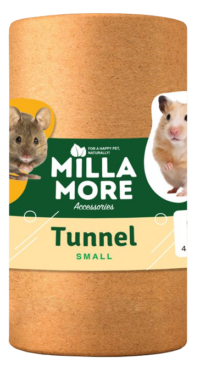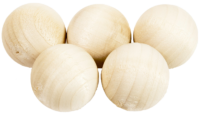Caring for a chinchilla
Caring for a chinchilla
Housing chinchillas
Chinchillas are usually kept as indoor pets and this is best for our climate. They can survive in quite cold temperatures but draughts can be very dangerous for them so they must be kept in a draught-free environment. They are prone to heatstroke in warm conditions, so never put their cage in a sunny window. Being nocturnal, it’s probably best not to put them in a bedroom.
Chinchillas are quite large for a small pet and they are very active so they need plenty of space. The minimum cage size for a pair is around 93cm long, by 63cm deep, by 159cm high, with shelves at different heights. Chinchillas should be allowed out for supervised exercise as much as possible and at least once a day. In the bottom of the cage use dust extracted bedding or shredded paper.
Chinchillas need an enclosed bed to sleep in during the day. This needs to be big enough for all the animals in the cage to curl up together if they want to, but there should be enough boxes for each chinchilla in case they want their own space. Wooden boxes are ideal, but whatever you use will eventually be chewed and need replacing.
Introducing chinchillas
To introduce a new chinchilla to one you already have, put them in separate cages side by side, about 10cm apart. This way they can smell each other without physical contact. Put their beds at opposite ends of the cages so they feel they have somewhere to escape to. Give each chinchilla its own dust bath, but swap these over daily so that they get used to each other’s scent.
Over a week or so, move the cages and beds closer until the chinchillas are sleeping next to each other. It’s important to introduce them slowly to avoid fights. When the two seem to be living happily side by side, put the existing chinchilla into the new chinchilla’s cage. They may take to each other straight away or there may be some initial squabbling. If this seems serious, separate them again for a few more days, but things should eventually settle down. It’s usually easier to introduce animals of the opposite sex (make sure the male is neutered first) or to introduce a young chinchilla to an adult.
Exercise and training chinchillas
Chinchillas are nocturnal, so they’ll be asleep for most of the day. They are most active in the early evening so this is a good time to get them out for a run. Make sure they’re supervised because they like to explore everything with their teeth and this can include electrical wires.
Before allowing your chinchillas out to run around the house, you need to be confident that you can catch them again. Chinchillas can become tame with a little time and training. When your chinchilla comes forward, stroke it gently under the chin. Do not try to catch them the first time this happens, just give them a treat and let go so they don’t associate you with being caught. Raisins are one of their favorite treats so offer these from your hand. Be careful because a frightened chinchilla will stand on its back legs and spray urine in the face of any potential threat!
Once your chinchilla is confidently taking treats and allowing you to stroke it, you can let it out. Start with quite a small space and then try offering a treat so your pet learns to come to your hand. Don’t try to catch your chinchilla yet but give the treat and let go again a few times.
To pick up your chinchilla, support the whole body on your hand and gently restrain them by holding the base of the tail. Never pick a chinchilla up by the tail – this can hurt them and could cause a serious injury. A frightened chinchilla that is being too strongly held will shed handfuls of fur so, if this happens, you are being far too rough.
How to clean a chinchilla?
In the wild, chinchillas use fine sand to keep their coats clean and in prime condition and you need to provide this for them in the form of a dust bath. Chinchilla dust can be bought from most pet shops. Never use ordinary sandpit or builders’ sand as this is too coarse and will damage the chinchilla’s fur and skin.
The bath needs to be large and deep enough for your chinchilla to roll around in without injuring itself, so the dust should be about 10cm deep. Chinchillas should be offered a bath once a day, for about 20 minutes. If the bath is left longer than this, it may become soiled and your chinchilla won’t want to use it. Change the dust at least once a week. Also check their eyes because a buildup of dust can cause eye problems.
https://www.bluecross.org.uk/pet-advice/caring-your-chinchilla




